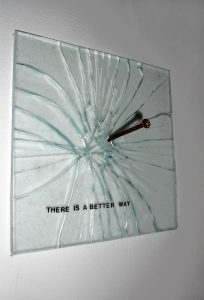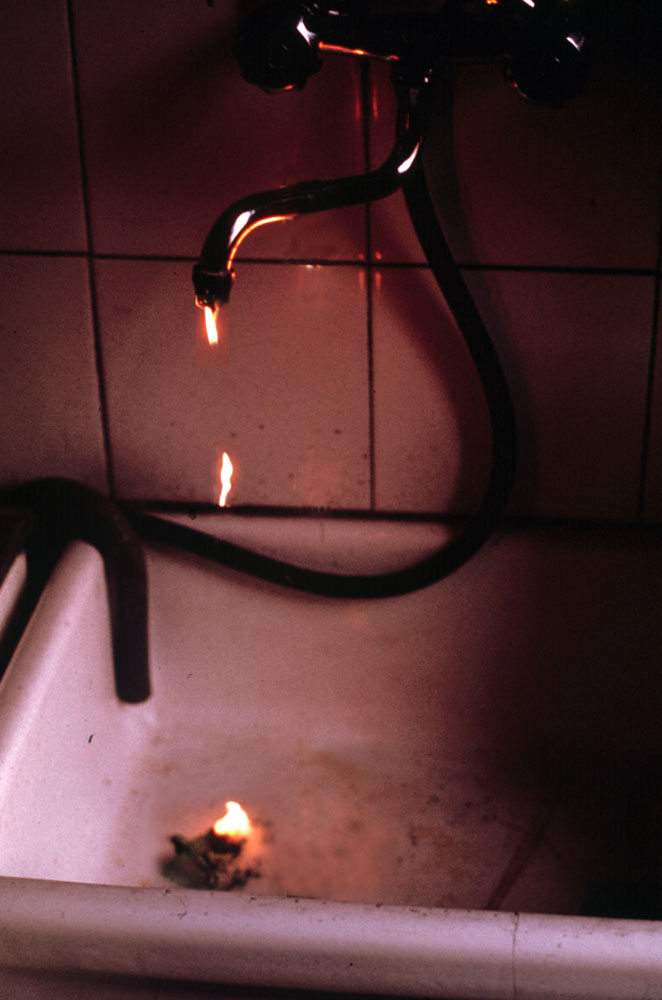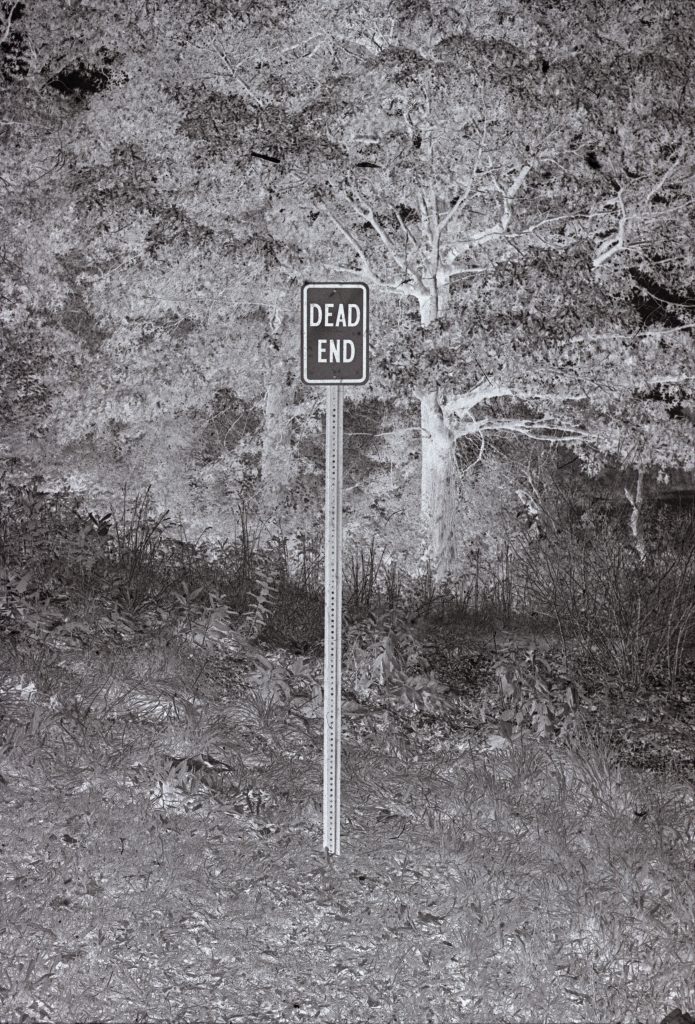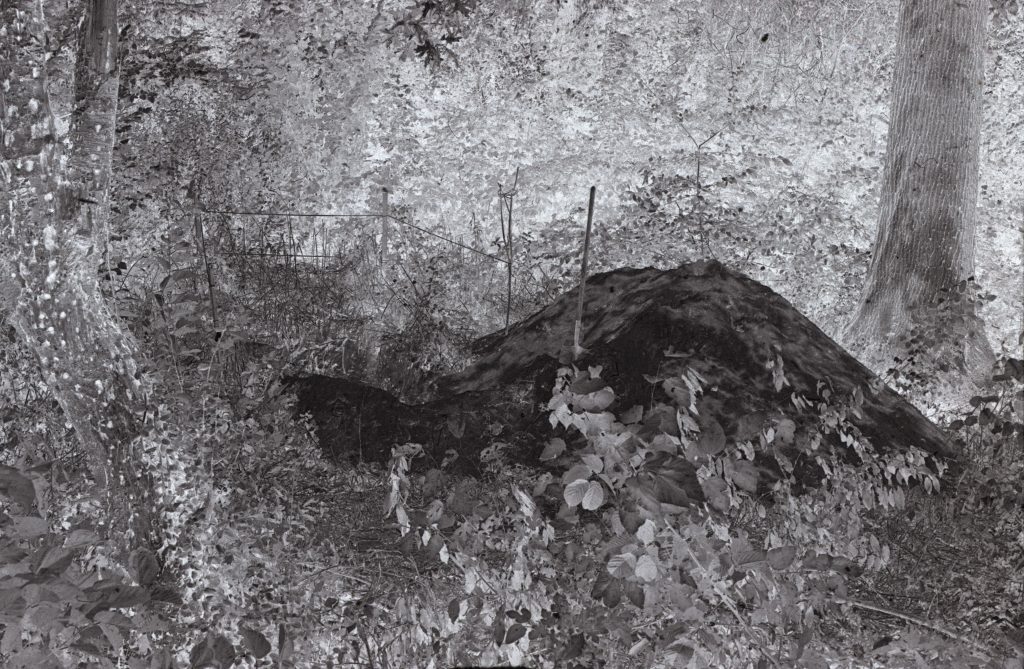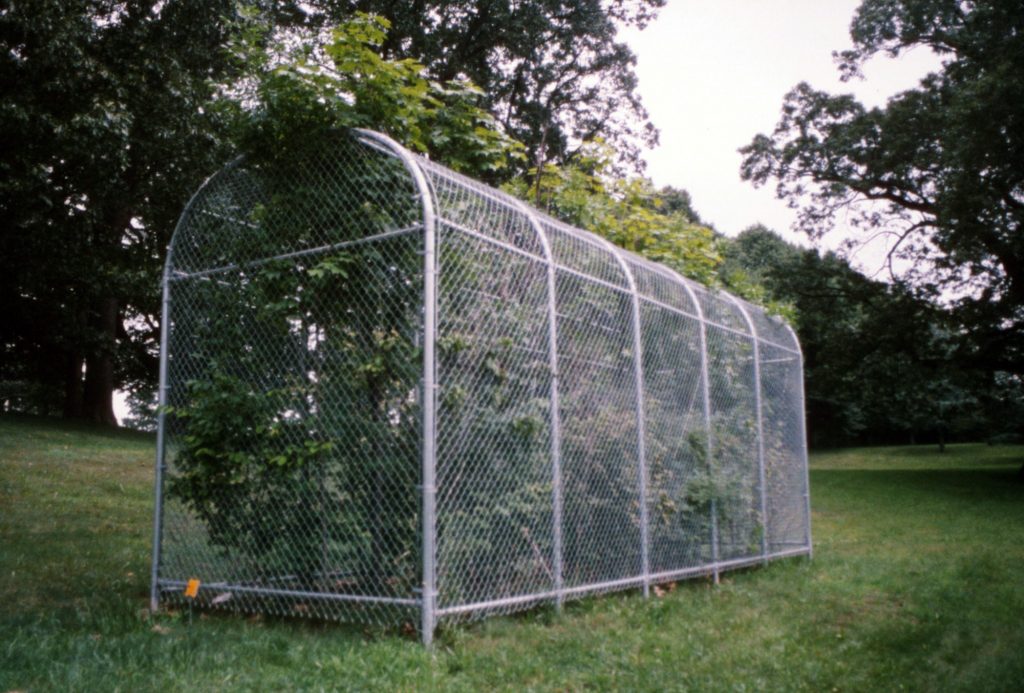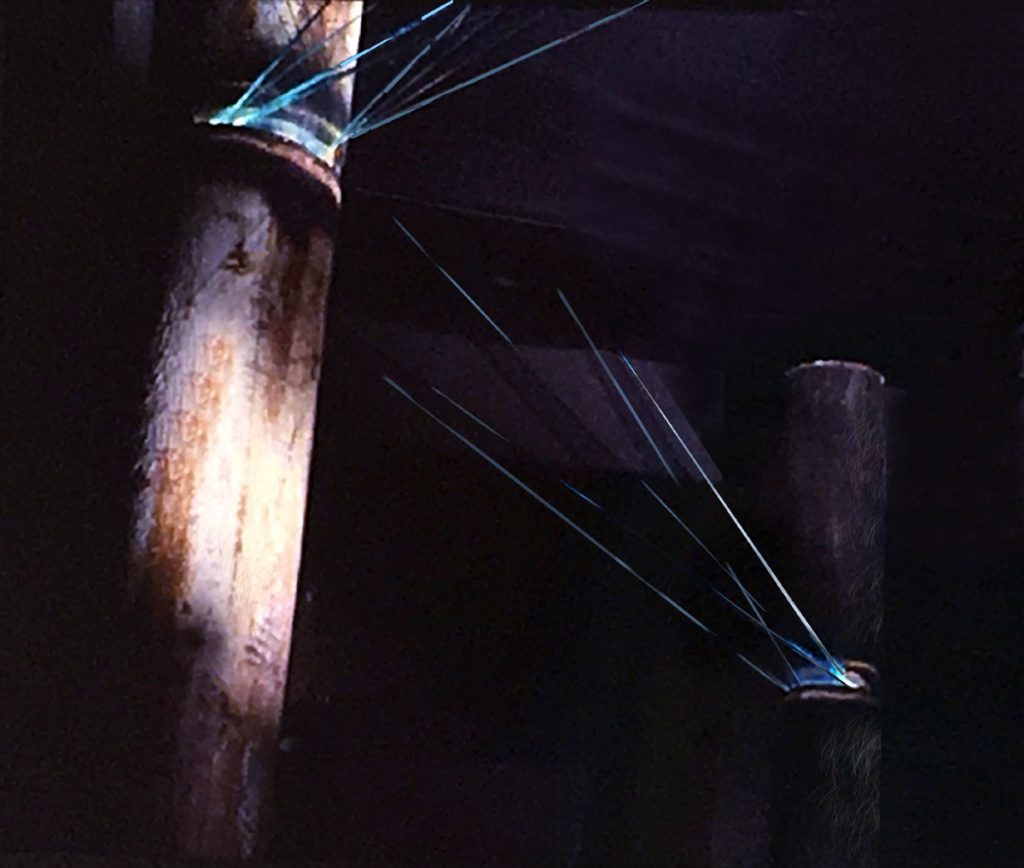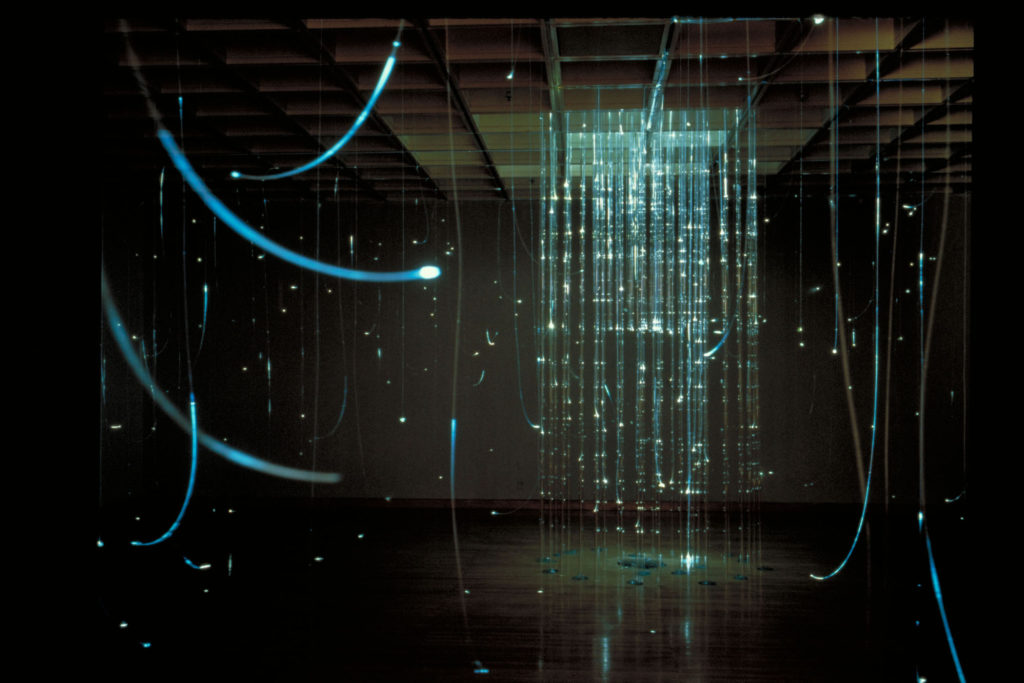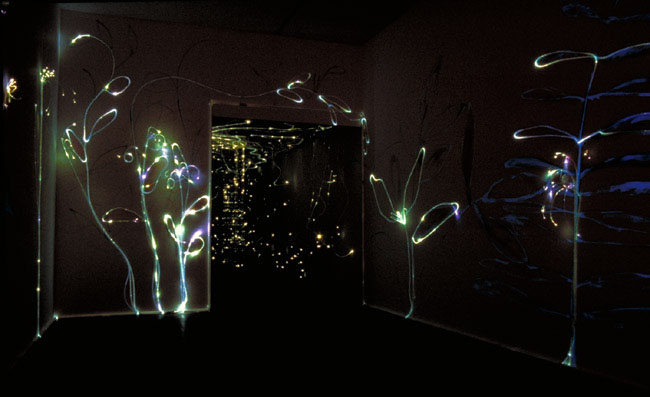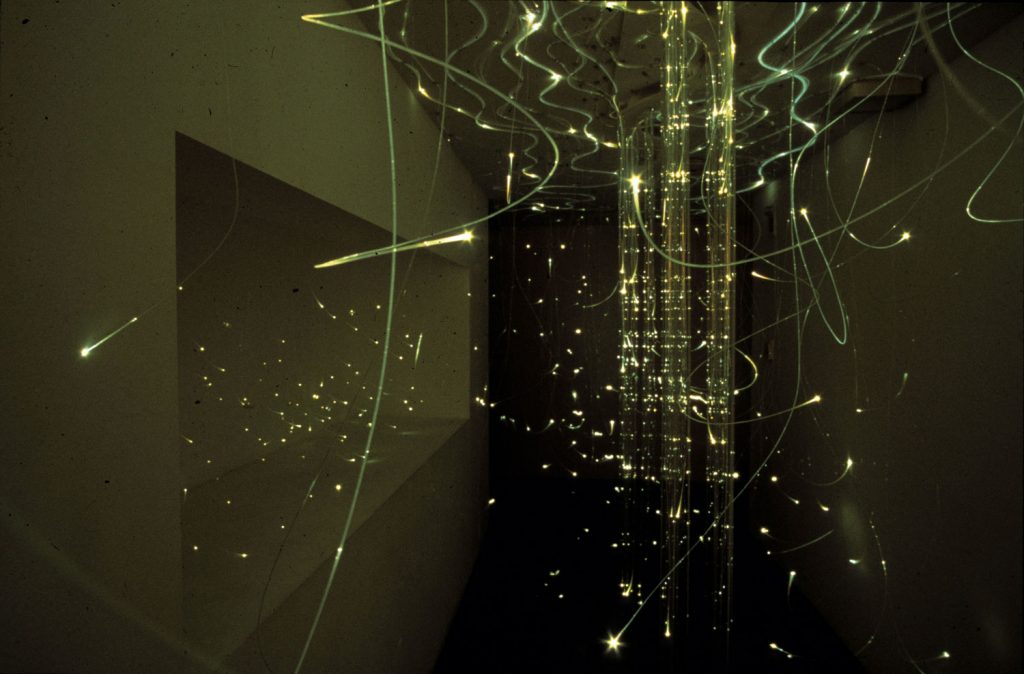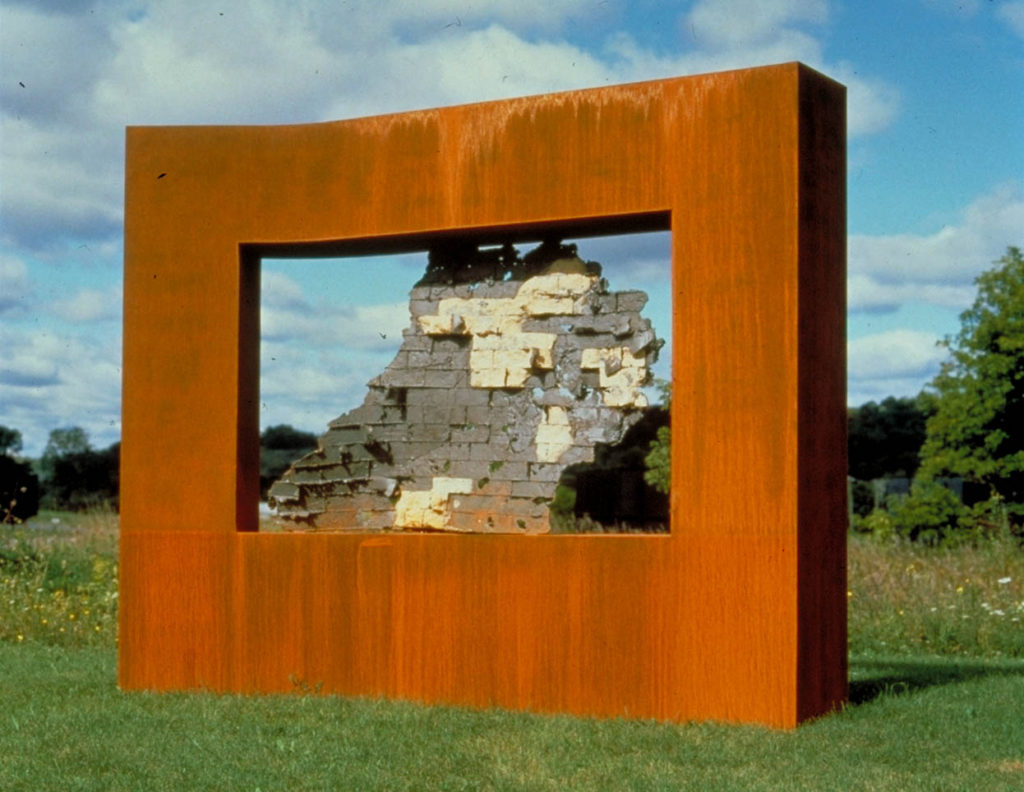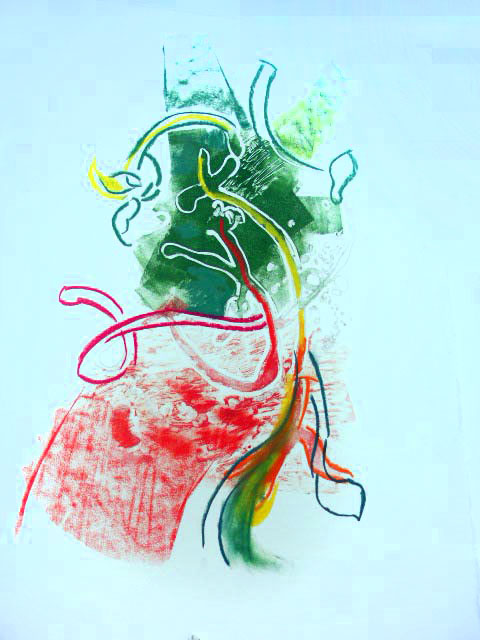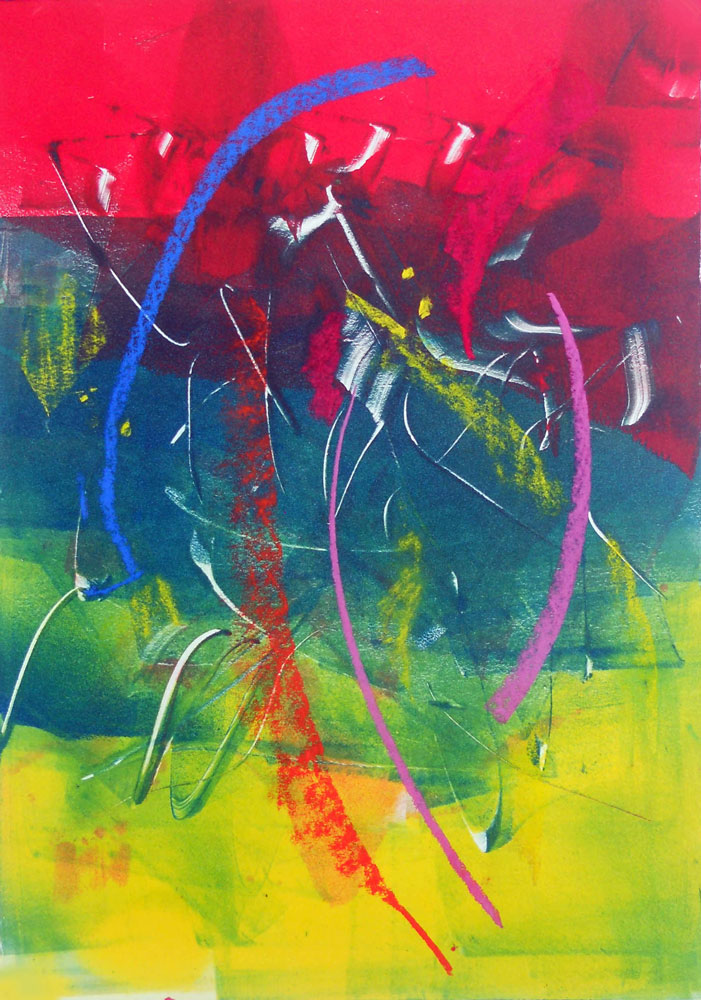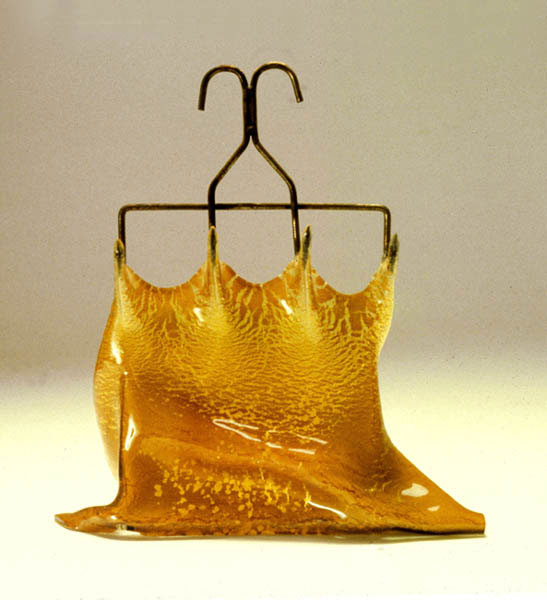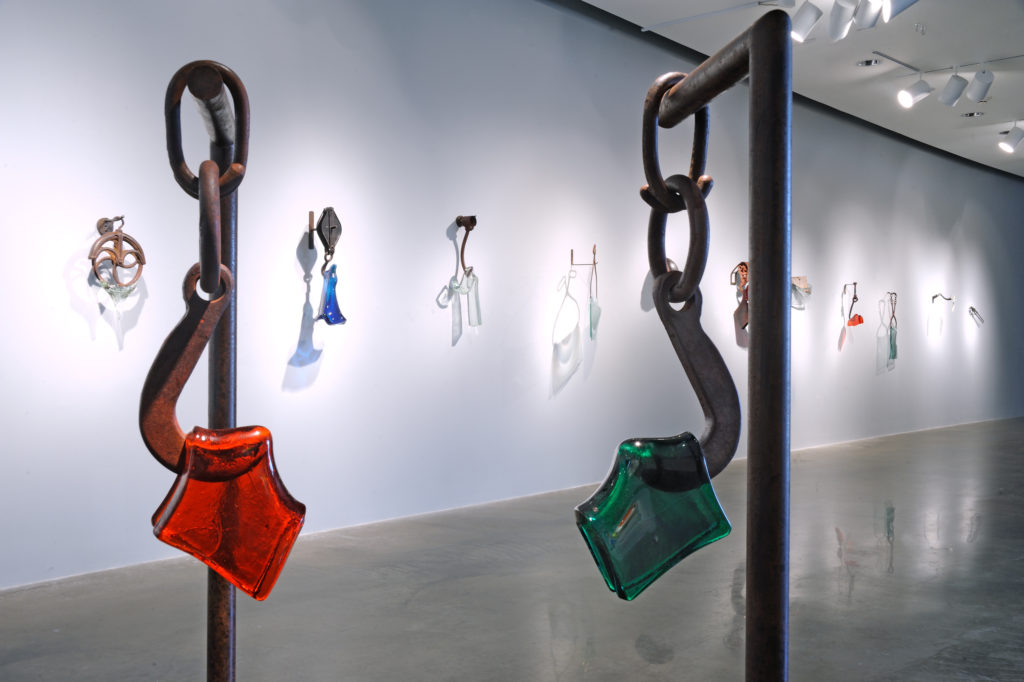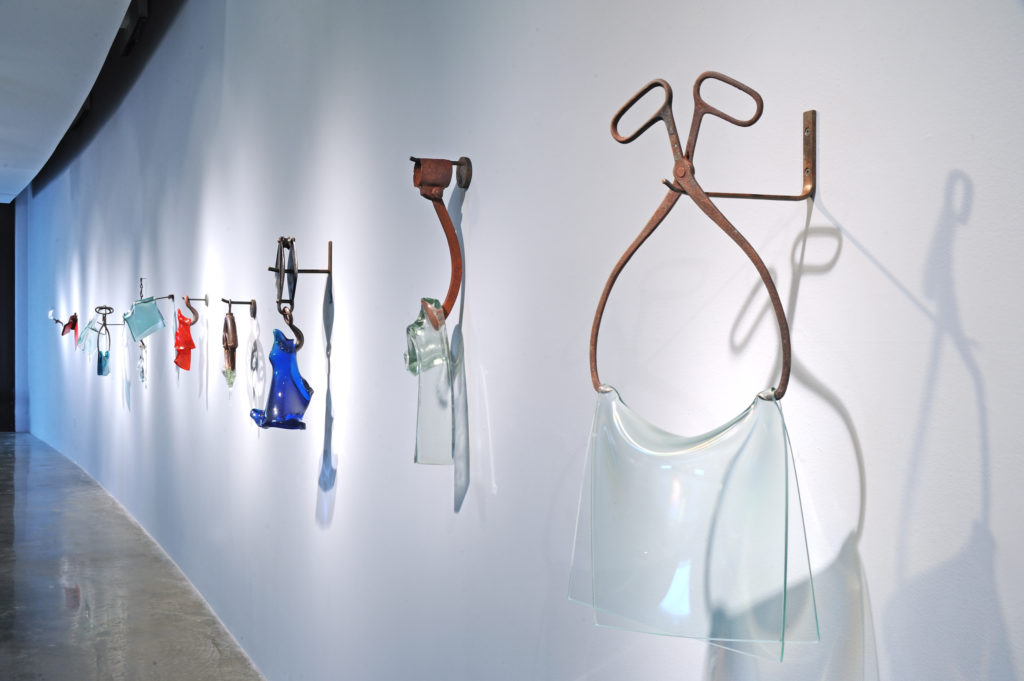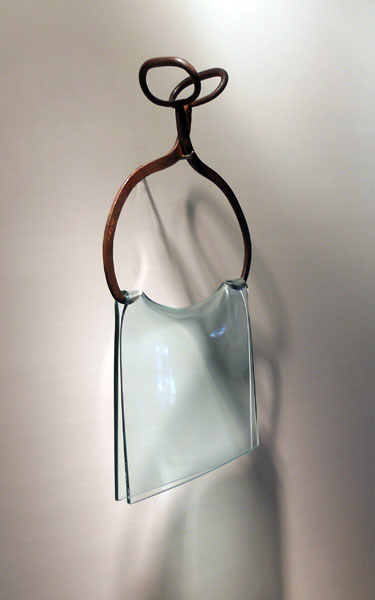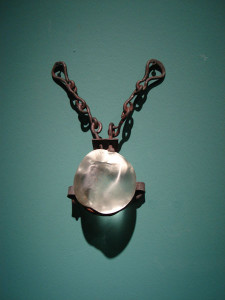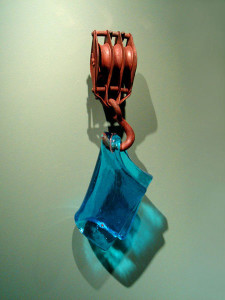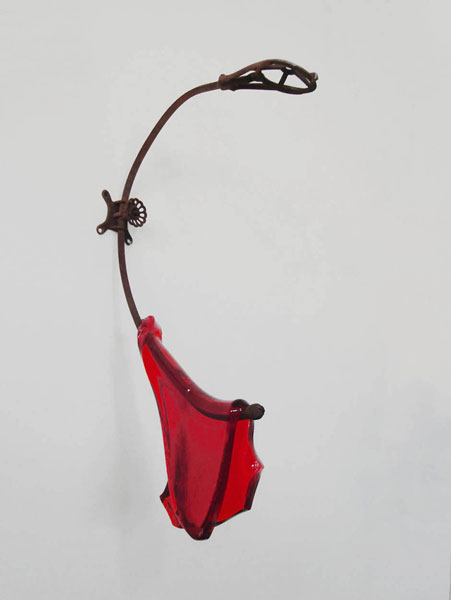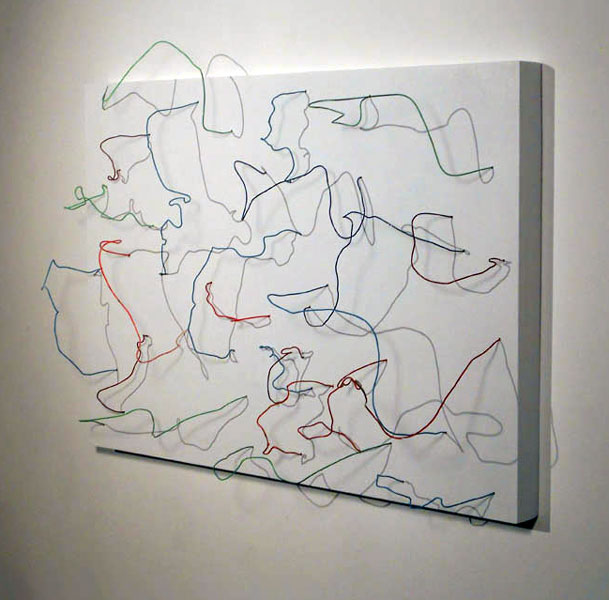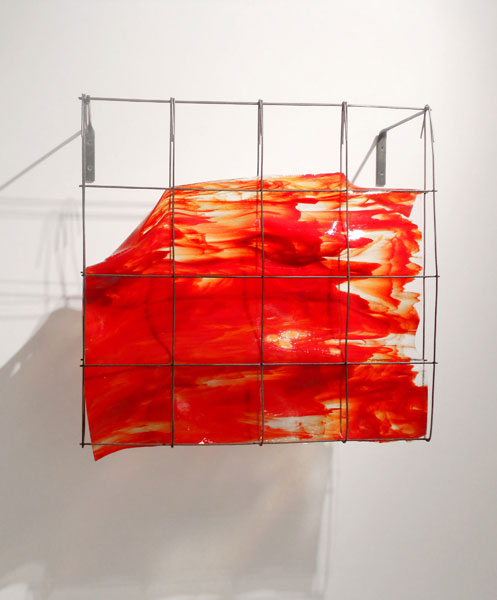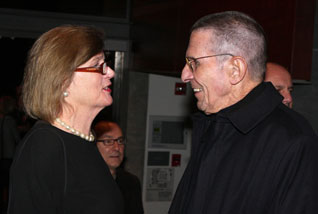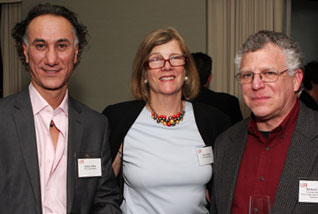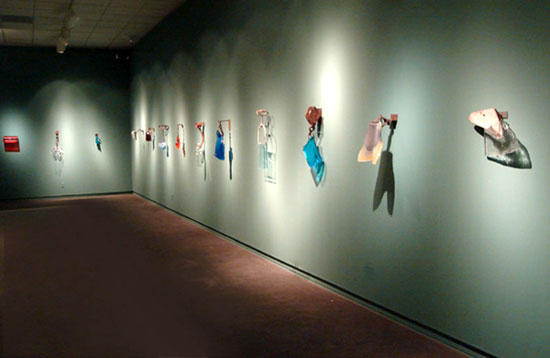Author: Mary Shaffer
Fire Drip
Dead End
Containment Field
Ode to Fiddler
Point of View
Light Wall
Fragment | Public Hospital PA
Mono Prints with Drawing
Aloft
by Andrew Page Glass Quarterly, Winter 2015/16
AloftGLASS141Winter2015Artist’s glass has life of its own
By Mark Jenkins, Washington Post
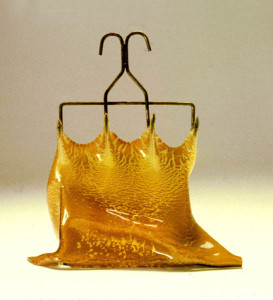
Mary Shaffer’s sculpture relies on oppositions: soft vs. hard, light vs. dark, clean vs. corroded. But the appearances of her principal materials — glass and metal — are more different than their actual natures. The glass that appears to flow is actually just as solid as the frames, hooks and tongs to which it’s attached. And the processes of making the clear or colored material — hot glass or slumped glass — are as industrial as manufacturing steel.
Reflections and Contradictions: Five Decades, Shaffer’s retrospective at the American University Museum, savors these incongruities. The selection, which dates to 1972, includes pieces in which glass poses as water, fabric or an icicle dripping from a rusted metal wheel. Although the patina emphasizes the bulk and strength of the metal pieces, the glass catches the light, making it appear weightless, mutable and alive.
Shaffer, who works in Texas and New Mexico, started as a painter, and two of her 1970s drawings are included here. There also are In the galleries: Artist’s glass has life of its own four pieces from a series in which undulating clear-glass diamonds bracket simple silver-metal shapes, rare examples of the artist’s work in which glass plays a supporting role. More often, though, it dominates, even when a small dab of the seemingly fluid material is attached to a large metal object. The found industrial pieces suggest the world as it stubbornly is; the glass evokes change, possibility and, well, art.
Mary Shaffer: Reflections and Contradictions: Five Decades American University Museum, Washington DC
September 12 through October 18, 2015
www.american.edu/museum
Reflections and Contradictions: Five Decades
OK Harris Works of Art | NYC | 2014
Mary’s Tools @ OK Harris NYC
Mary Shaffer’s sixth exhibition with the prestigious New York gallery after a 25-year hiatus.
Returning to her “Tool Series” for the show titled Mary’s Tools, Shaffer combines metal tools, often hand-forged, with slumped glass–plate glass bent in a kiln, or hot glass molded through a process she calls “dippy-do,” in which the object is dipped into a crucible of molten glass. The results are often whimsical, even lyrical.
“I love making this work,” says Mary. “Each found tool, discarded and no longer useful to our present society, talks about a time when families were living on the land and many were self-sufficient; to a time when our connection to the earth was strong and vital.” She says this work reminds her that we’ve lost that connection to nature and the awareness that our stewardship of the earth is paramount to our continued survival as a species.
Mary lives in Marfa, TX, and Taos, NM, both small towns with a strong artistic culture and an environmentally sensitive community that influence her work. Her storefront studio in Marfa has become a popular stop for visitors exploring the galleries and museums of this creative town.
OK Harris was founded by the legendary Ivan Karp, the cigar-smoking, witty art dealer who discovered Andy Warhol and established the Photorealist movement, launching painters like Richard Estes and figurative sculptor Duane Hanson. Shaffer started exhibiting with Ivan in the early 1970’s. Mary says, “When Ivan sold a piece of mine, he would give me all the money, saying, you need this. He was right!”
Art Fairs
Shaffer Précis
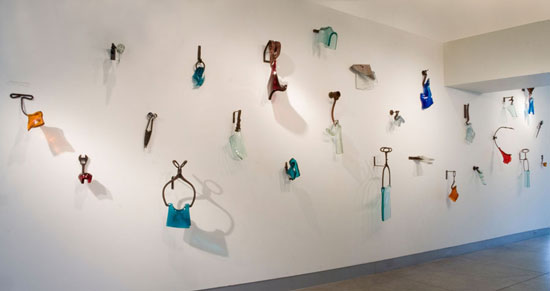
USA Simon Fellow 2009
Mary Shaffer is recognized as one of the founding artists of the American Studio Glass Movement. She studied painting at the Rhode Island School of Design in the 1960s. In the 1970s, she developed a unique technique adapted from the auto industry, which she calls “mid-air slumping.” It allows her to use gravity to soften plate glass into a form, which she often combines with metal tools. Her sculptures range in scale from small objects to room-size installations and public works.
– United States Artists web site
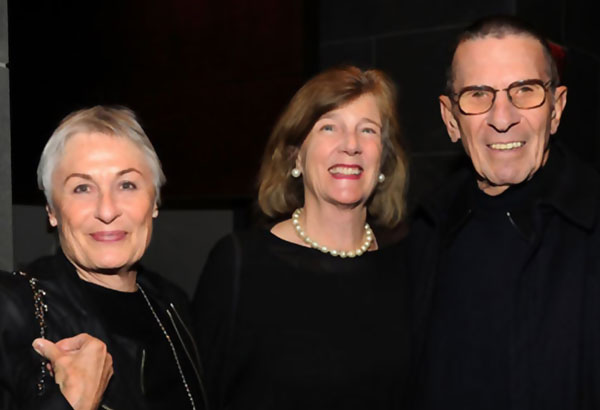
These two images by Brant Brogan
